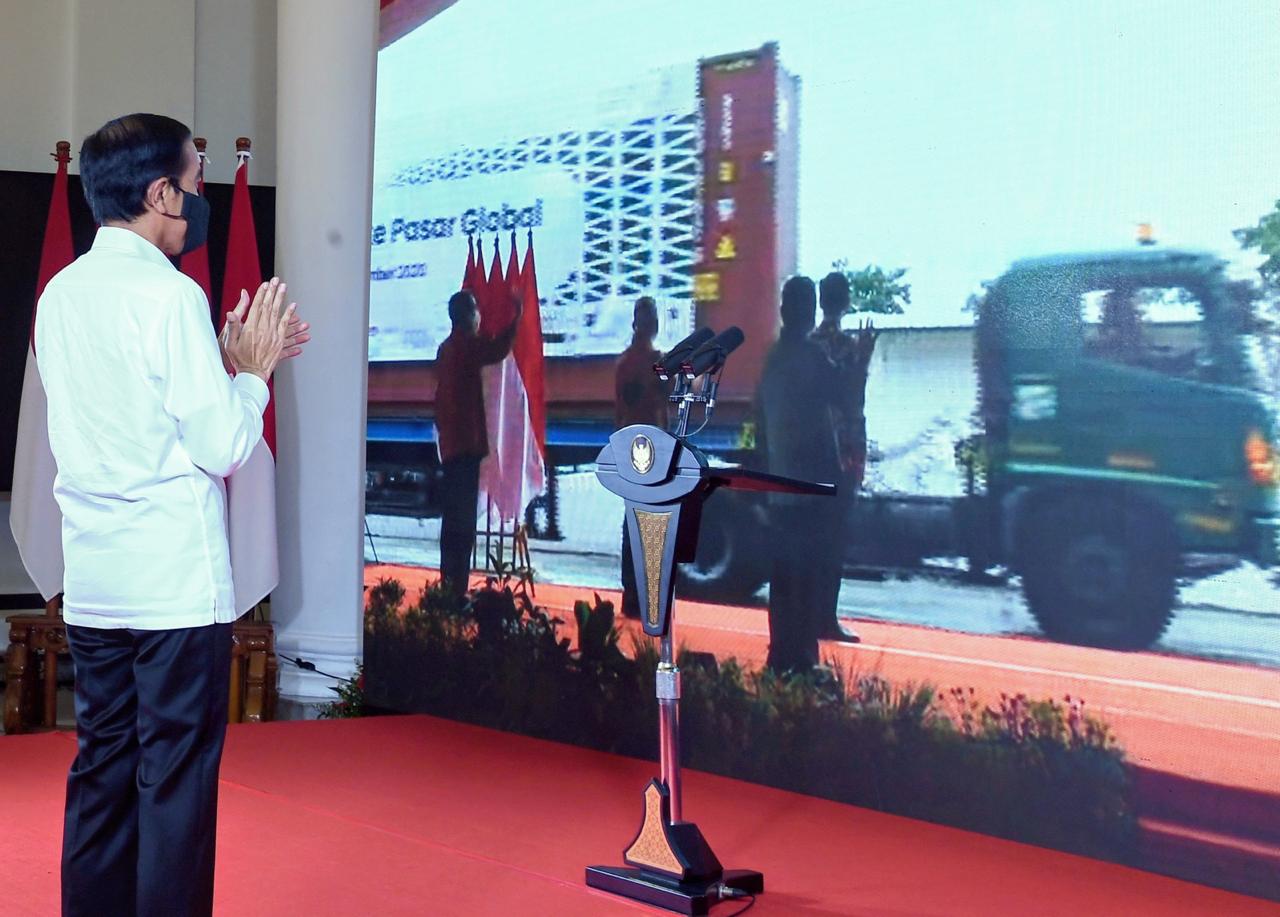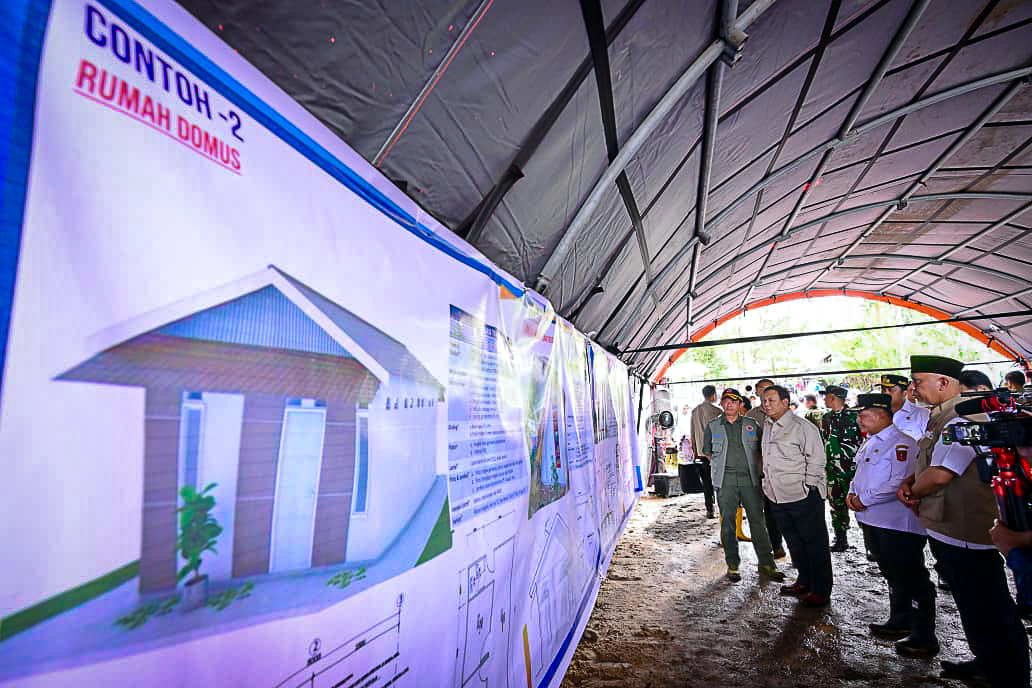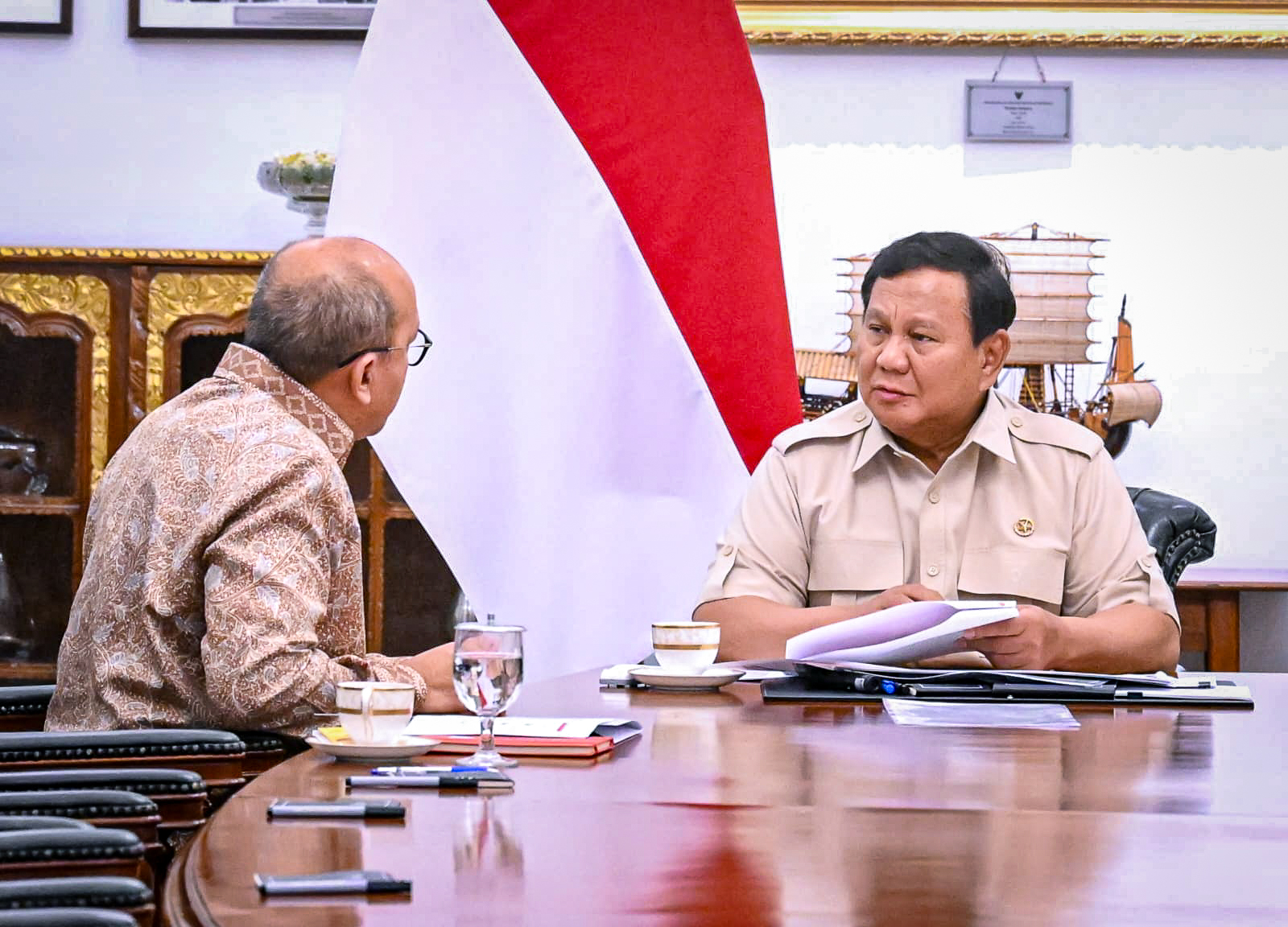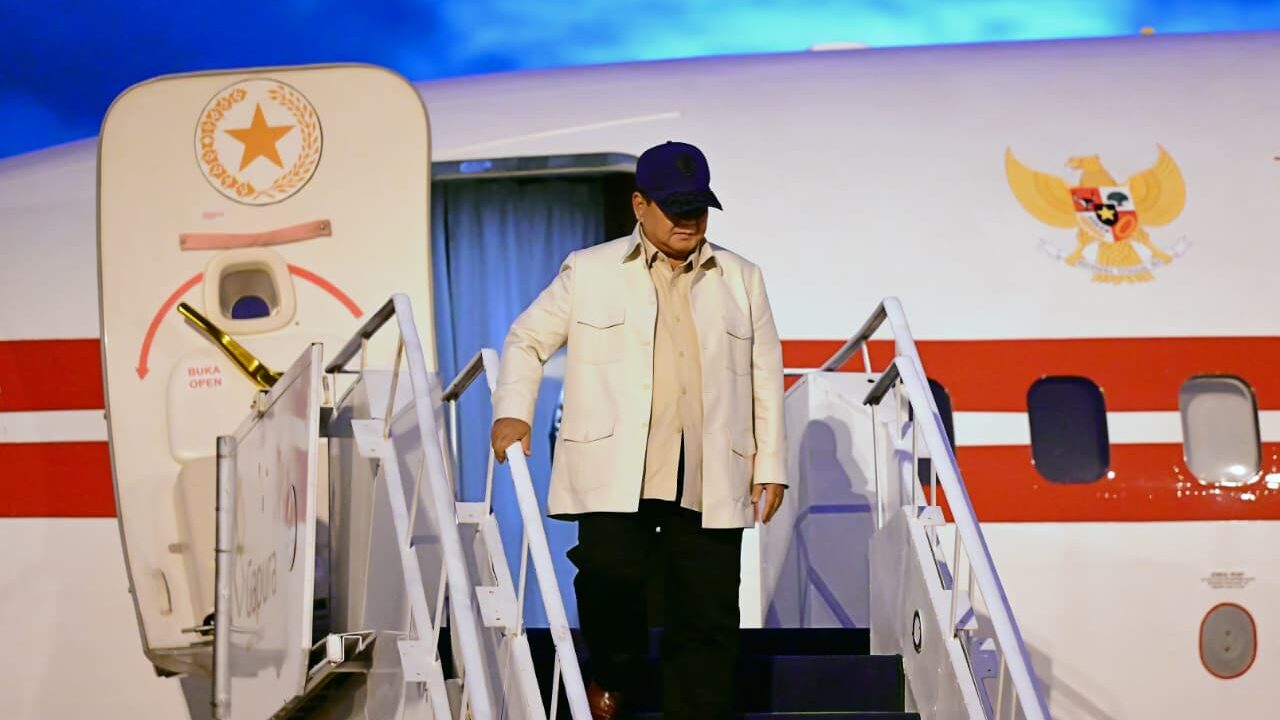Indonesia’s Trade Balance Remains in Surplus: Minister

President Jokowi inaugurates the rollout of export products to the global market in 2020, some time ago. (Photo by: Presidential Secretariat Press Bureau Archive)
Indonesia’s monthly trade balance has once again recorded a surplus in November, reaching USD2.61 billion, Minister of Trade Agus Suparmanto has said.
According to Agus, this achievement continues the trend of trade balance surplus that has been recorded since May this year.
“Although the surplus has decreased compared to that of October at USD3.58 billion, this November surplus is the third highest surplus recorded throughout the year,” he said, Thursday (17/12/).
The Minister also pointed out that the trade surplus in November was different from the previous one, of which the former occurred due to export growth that was higher than import growth.
Indonesia’s trade balance surplus in November, he continued, originated from a non-oil and gas sector surplus of USD2.94 billion and an oil and gas deficit of USD322.9 million.
Even though the oil and gas deficit in November decreased, the total trade balance surplus was lower than that of October, he added.
The drop in the trade balance surplus in November was sustained by a significant drop in the non-oil and gas surplus, compared to the October non-oil and gas surplus, he said, adding that the November non-oil and gas balance surplus was USD2.94 billion, a decrease of USD1.10 billion compared to that of October 2020 at USD4.04 billion.
Meanwhile, oil and gas deficit in November stood at USD322.9 million, a decrease of USD142.5 million compared to that of October at USD465.4 million, he said.
Indonesia’s exports in November were recorded at USD15.28 billion, growing by 6.36 percent month-on- month (MoM) or 9.54 percent year-on-year (YoY) thanks to increased exports in vegetable fats and oils, mineral fuels, iron and steel, as well as machinery and equipment from machinery, he added.
Meanwhile, agricultural sector grew by 6.33 percent (MoM) or 33.33 percent (YoY), the manufacturing sector was 2.95 percent (MoM) or 14.47 percent (YoY), and the mining sector rose by 25.08 percent (MoM) or decreased by 2.05 percent (YoY).
Amid the COVID-19 pandemic, the cumulative total of Indonesia’s exports during January – November this year stood at USD146.78 billion, a slight decrease of 4.22 percent (YoY).
Meanwhile, during January – November this year, exports of non-oil and gas sector and oil and gas sector fell by 2.18 percent and 31.59 percent respectively.
“November exports have shown that global economic recovery is improving. A year ahead of COVID-19 pandemic, the world community is now getting better at adapting to implementing health protocols to prevent the spread of the corona virus. Thus, the public can continue to be active and work productively so that global economic activity will also improve,” he said.
The value of Indonesia’s exports in November to major partner countries continued to grow, including to China, which grew by 16.17 percent (MoM), Japan by 11.67 percent (MoM), India by 10.04 percent (MoM), Australia by 16.56. percent (MoM), and South Korea by 7.12 percent (MoM).
Export performance in several countries in the ASEAN region and the European Union also continued to improve, such as exports to Malaysia and Thailand amounting to 24.5 percent and 8.79 percent respectively as well as to Germany and the Netherlands at 35.38 percent (MoM) and 7.52 percent (MoM) respectively.
Meanwhile, Indonesia’s imports in November grew by 17.40 percent (MoM) to reach USD12.66 billion thanks to an increase in oil and gas imports by 0.59 percent (MoM) with a value of USD6.3 million and an increase in non-oil and gas imports by 19.27 percent (MoM) with a value of USD1.87 billion.
The increase in oil and gas imports is consistent with the increase in energy consumption and community activities. Meanwhile, quite high spike in non-oil and gas imports reached USD11.58 billion or rose by 19.27 percent (MoM) but fell by 12.33 percent (YoY), sustained by imports of machinery and electrical equipment which increased by 23.82 percent (MoM) or in the amount of USD354.4 million.
In terms of use of goods, the largest growth in imports derived from imports of capital goods with the growth reaching 31.54 percent (MoM) with a value of USD2.43 billion, followed by growth in imports of consumer goods reaching 25.52 percent (MoM) with a value of USD1.3 billion and raw/auxiliary materials reaching 13.02 percent (MoM) with a value of USD8.93 billion.
Agus also revealed that raw/auxiliary materials accounted for 70.51 percent of the country’s total imports in November.
Cumulatively, Indonesia’s import value from January to November this year stood at USD127.13 billion, a decrease of 18.91 percent (YoY), he said, adding that during January – November 2020, the import value of all categories of goods used decreased compared to the same period in the previous year, including a decrease in the consumer goods group (fell by 12.59% YoY), raw/auxiliary materials (fell by 19.78% YoY), and capital goods (fell by 18.61% YoY).
The country’s non-oil and gas imports during January – November were dominated by imports of goods from China with a value of USD34.91 billion (with a share of 30.53 percent of Indonesia’s total non-oil and gas imports), Japan at USD9.77 billion (8.54 percent), and Singapore with USD7.38 billion (6.45 percent).
Non-oil and gas imports from ASEAN reached USD21.16 billion and contributed 18.50 percent to Indonesia’s non-oil and gas imports. Meanwhile, imports from the European Union were recorded at USD 9.06 billion with a share of 7.92 percent.
“The share of imports from China has increased quite significantly during the pandemic thanks to a relatively fast recovery of the pandemic in China compared to other countries so that supplies from China become the main alternative for Indonesian market,” he said. (Ministry of Trade PR/UN) (MUR/EP)








